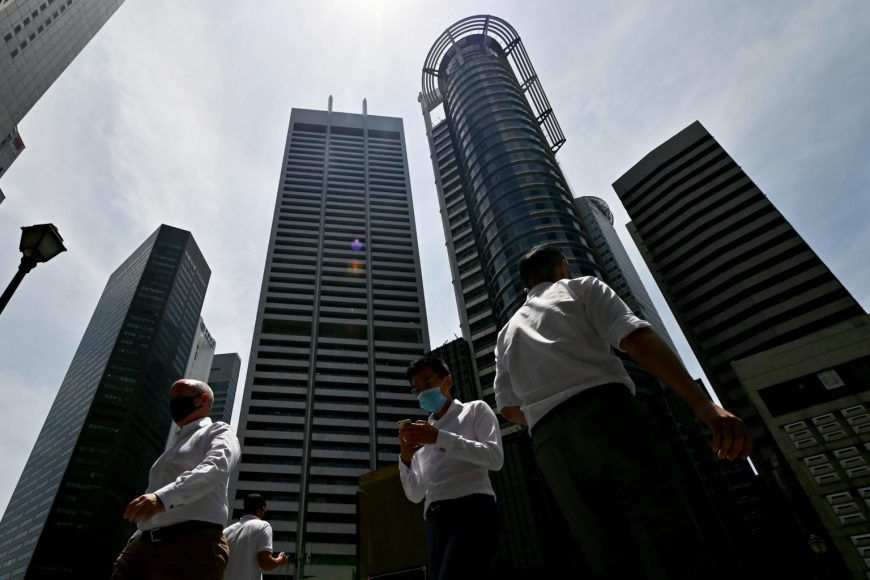THE current global recession will have a more benign and shorter-lived impact on offices in the Asia-Pacific (APAC) – excluding Greater China – than elsewhere around the world, while the region’s office sector will take just a marginal hit from the work-from-home phenomenon.
That’s according to real estate services firm Cushman & Wakefield (C&W), which noted that all APAC economies are set to see gross domestic product (GDP) return to pre-Covid levels by Q3 2021 in the baseline scenario.
The slowdown in the creation of new office-using jobs as well as the outright job losses will challenge office leasing fundamentals over the next six to 18 months, C&W noted in a report published on Thursday.
That said, demand – as measured by net absorption – in the region is forecast to remain positive from now through 2030.
Net absorption in APAC this year will plunge by 70 per cent from last year to about 21 million square feet (sq ft) under the baseline scenario, the firm predicted. This represents an absorption rate of 2 per cent, the lowest since record-keeping began in 2007.
Next year, net absorption is then expected to moderately improve to 28 million sq ft, C&W said.
From 2022 to 2030, the firm foresees net office demand growing by 729 million sq ft in the region.
This will be despite a 4.5 per cent drag from more employees working from home. “Increased flexible working and work-from-home practices are less prevalent across APAC as a whole compared to other regions, and so do not meaningfully alter the outlook for the region’s office market,” said Dominic Brown, head of insight and analysis for APAC at the firm.
There is early evidence that APAC will be somewhat more resilient relative to the other global regions, even though it is still not immune to the pandemic’s impact.
For instance, net absorption in the US during the second quarter of this year was -23.1 million sq ft, versus 2.9 million sq ft in APAC.
In terms of APAC’s office employment base, the demographic growth in emerging markets helps to mitigate overall office-job losses.
Emerging markets such as India, Indonesia, Malaysia and the Philippines are likely to see more jobs that are office-using, as the economies move rapidly up the value chain.
Office rents in emerging markets will thus see just a shallow and short decline of 2.6 per cent over the next 18 months, before returning to pre-Covid levels in Q4 2022 with continued growth thereafter.
In contrast, the more advanced markets including Singapore, Japan, Australia and South Korea will experience lower demand for offices, which will flow through to weaker rental growth.
A sharper peak-to-trough rental decline of 21.3 per cent is forecast over the next 21 months for offices in the region’s advanced markets, after factoring in the more severe employment declines and more elastic rent responses to declining occupancy levels.
Aggregate rents in the advanced economies will return to pre-Covid levels only in 2026, according to C&W.
Dr Brown noted that the region had entered the Covid-19 crisis with a “formidable supply pipeline, with a robust wave of office development slated for delivery in 2020-2022”. More than 211 million sq ft of new supply is expected by end-2022.
As such, even before the coronavirus outbreak, APAC markets were already softening as vacancies rose and rents fell.
This trend is set to intensify, based on the real estate firm’s forecasts. Vacancies in the region will likely peak at 16.7 per cent in late 2021 and stay elevated for the following year, before decreasing more rapidly.
That vacancy level is over 500 basis points above pre-Covid levels in Q4 2019, and will be the highest on record, C&W said.
As for Greater China, the uptrend in vacancy rates even before the pandemic is expected to accelerate amid weaker demand.
Class A rents in Greater China will soften in 2020 and 2021, then become broadly flat in 2022, before returning to growth in 2023, C&W predicted.
Of all the regions studied in C&W’s report, Greater China will see the smallest impact to its structural office demand. The work-from-home trend will only lower net office demand by 2.9 per cent, the firm said, adding that net office demand for the region is set to grow by about 536 million sq ft from 2022 to 2030.
By Fiona Lam, Business Time/ 24-Sep-2020

